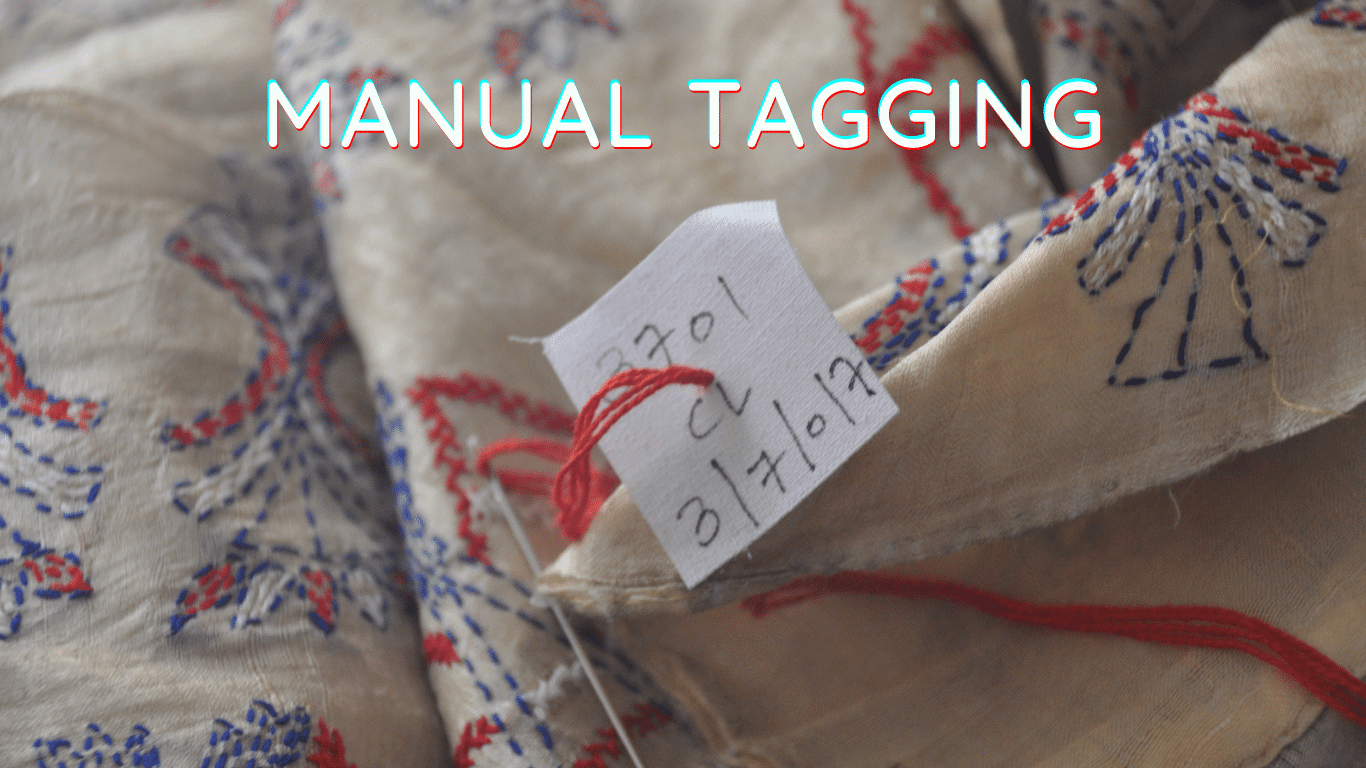Tags in laundry business are as important as a heart in the human body. From the start-up until the end, it’s a tagging system that is the base of the laundry business operations. But, what if this tagging system is the one that is defective or has insufficient information. Think of the nightmare it would cause in your operations. The entire system would falter. Manual tags depend highly on the skill of your manpower. Also, due to the limited size of the tags can contain a small amount of information about the order and processing that needs to be done on the garment.
Traditional tags usually contain information about the order number and number of that garment out of all the garments in the order. That would be all. This is sufficient for your employees who will be doing the service of the garment. They are unaware of the fact if it needs additional services like ironing, starch, processing with softener, etc. These are just the superficial consequences of manual tags for a dry cleaning business. Here are more consequences that happen due to the inefficiency of manual tags.
Consequences of using manual tags in laundry business:
Unable to track garment
Since manual tags are handwritten it’s tough to keep track of their stages. As a result, you cannot inform customers at what stage their garment is. Not just from a customer’s perspective. If you need to check for a missing garment, you can never know where to look for it. Hence, you have to look for the garment everywhere and yet you may still not be able to find it.
Incomplete information
The biggest drawback of the manual tags in laundry business is the consistency of very limited information. There is not much scope for adding additional information which might make it easy for your employees at the plant to process the garments in a desired way. Most of the time, this is where the customer experience goes wrong. Either the complete service is not done or the service is not up to the mark. It is practically impossible to keep track of things manually.
Wrong Deliveries
Since the amount of information on the manual tag is limited, it is highly possible for employees to mix orders. Say for example, there is a possibility that 2 of the orders and both have 1 white shirt. It gets difficult for employees to differentiate between the 2 and a lot of times they end up mixing the 2. Eventually by the time the delivery is done, the issue doesn’t surface and then the customer realizes the issue. At this point, you are in a fix, as you have made a wrong delivery, there is another order that will have the same issue. Also, its nearly impossible to identify which order is it. It’s now up to the other customer, once they realize that there is a wrong delivery you can probably just wait. But your first customer might not want to wait. There must have been instances where you would have paid compensation. You can easily eliminate this with barcoded tags for laundry business.
Compensation
The above point automatically brings us to this point. In case if the garment is missing or you are unable to find that it is stuck at which stage, most probably you end up paying for it. There have been multiple cases across countries where scenarios like these have happened. Compensation is one of the biggest pain points for any dry cleaner as you incur a loss that is 5 times the amount of the service. Evening out this loss takes you a good time, while there is no prevention of this not happening again.
Human error
People just make mistakes. And this seems to be vastly applicable for laundry and dry cleaning industry. A lot of times, employees tend to make mistakes in making tags in laundry business. This as huge consequences as one mistake in the order number gets multiplied by 2. If the employee wrote an incorrect order number then 2 orders get messed up. And it becomes nearly impossible to identify which garment belongs to which order.
A simple way to eliminate these loopholes is to bring in automated QR code tags for the laundry business.
Automated QR coded tags are equipped with scanning hence, any garment can be scanned to know the order details. Hence, you can implement garment tracking at every stage. Additionally, automated tags contain detailed information about all the services that need to be done on the garment. Automated tags provide have low scope of error as they are system generated and are automated allotted a different number for each order.
Automated tags form the foundation of your business and you want to make sure that the foundation is strong enough to bear the weight of the building that is going to be rising up over time.
To know more as to how automated tags are beneficial for your business read our blog- manual tagging vs automated tagging.




